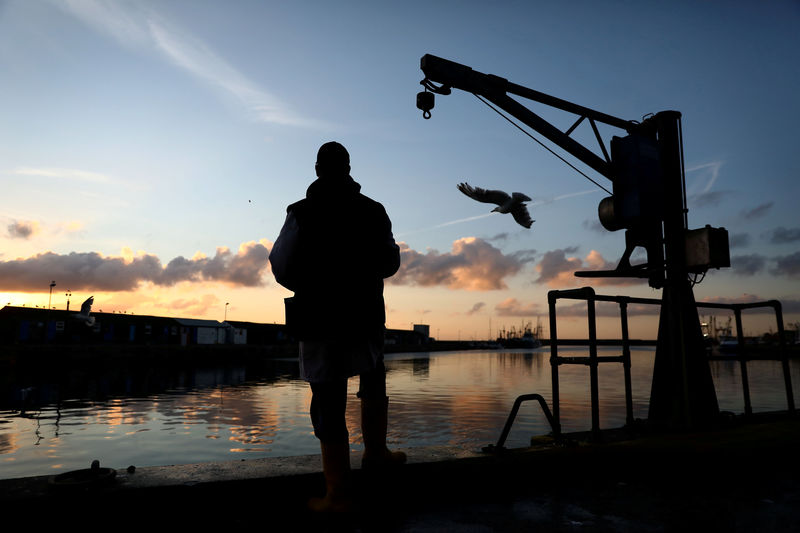 © Reuters. FILE PHOTO: A fish trader takes a break as the sun rises in Newlyn
© Reuters. FILE PHOTO: A fish trader takes a break as the sun rises in NewlynLONDON (Reuters) – British fishermen hopeful of a post-Brexit boom may find life outside the European Union choppier than expected, a Reuters Graphic shows.
Changing sea temperatures, caused by climate change, have forced many of the fish most popular with British consumers, such as cod and haddock, to migrate north into cooler waters controlled by Norway and Iceland.
(For an interactive graphic on Brexit and the fishing industry, click http://tmsnrt.rs/2DKUKZD)
The graphic, drawn from the activities of tens of thousands of British and European fishing vessels, also highlights the importance of access to the European market to the industry – with Britain exporting around 75 percent of its catch to EU markets.
(To view a graphic on British fish catch landings, click http://tmsnrt.rs/2EpkyMc)
Britain and its European Union neighbors currently enjoy equal access to EU waters, and can buy and sell fish freely inside the world’s largest trading bloc. That will change with Brexit, but how is still to be negotiated.
(To view a graphic on UK’s tangled trade, click http://tmsnrt.rs/2DDFFsS)
Britain’s waters have helped sustain fishing industries in neighboring countries such as Denmark, France, Ireland and Spain while the European Union controlled access under its Common Fisheries Policy.
But the British fishing industry is demanding a large share of the catch when control of the waters shifts from Brussels to London.
(For a graphic on UK’s fishing trade, click http://tmsnrt.rs/2DBc1o1)
However, any restriction on EU market access would be likely to take the form of tariffs which can be as high as 24 percent on seafood.
(To view a graphic on climate change and the North Sea, click http://tmsnrt.rs/2Ea9y58)
Fusion Media or anyone involved with Fusion Media will not accept any liability for loss or damage as a result of reliance on the information including data, quotes, charts and buy/sell signals contained within this website. Please be fully informed regarding the risks and costs associated with trading the financial markets, it is one of the riskiest investment forms possible.
Source: Investing.com






























